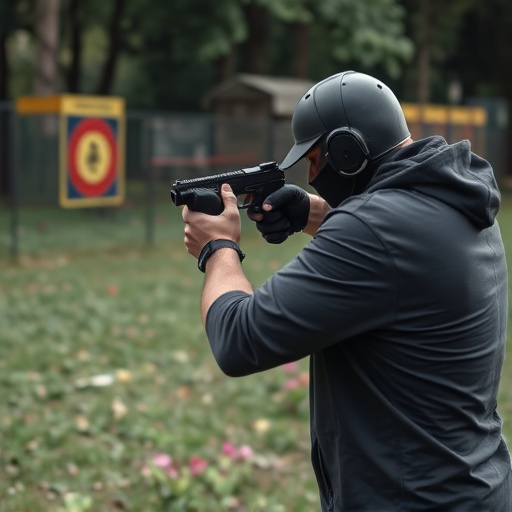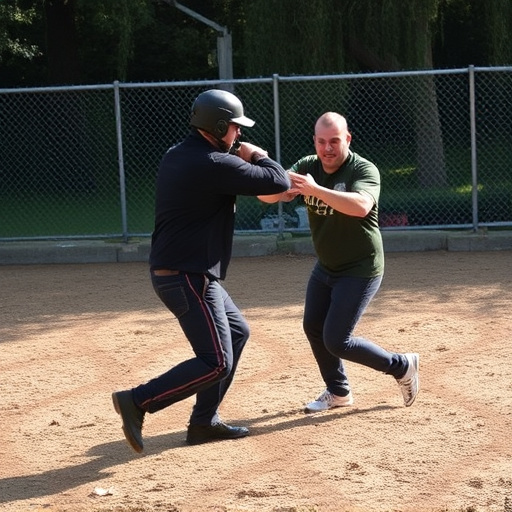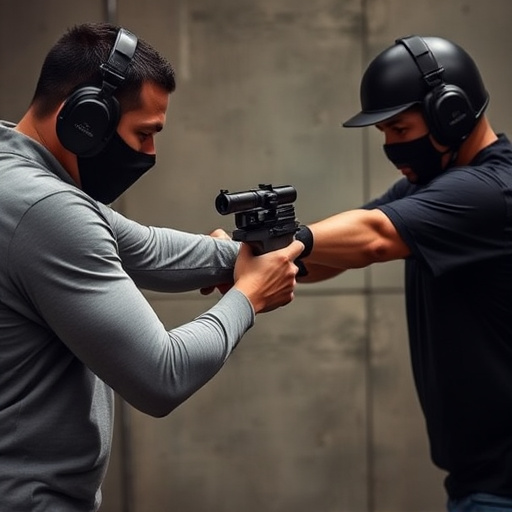Tasers, popular for defense, disable targets through electric current lasting from seconds to a minute, varying by brand, body part struck, and target's condition. Paralysis duration depends on factors like voltage, amperage, strike location, and environmental conditions, with top brands like Taser, Olean, and Control24 offering extended immobilization times. Recovery usually involves temporary muscle soreness and blurred vision subsiding within 24-48 hours, but prolonged or repeated use carries risks. Law enforcement deployment strategies require proper training on different High Voltage Stun Gun Brands to balance effectiveness and safety concerns.
“The impact of taser deployment and its duration of paralysis has sparked intense debate and legal scrutiny. This article delves into the intricate details surrounding this non-lethal weapon, exploring how various factors influence the time individuals remain paralyzed after exposure. We compare leading High Voltage Stun Gun Brands, dissecting their effects on the body, and provide medical insights into post-stun recovery. Additionally, we examine legal considerations, shedding light on responsible taser use cases.”
- Understanding Taser Deployment Effects
- Factors Influencing Paralysis Duration
- High Voltage Stun Gun Brands Compared
- Medical Insights on Post-Taser Recovery
- Legal Considerations for Taser Use Cases
Understanding Taser Deployment Effects

Tasers, or stun guns, emit a powerful electric current that temporarily disables targets, making them an attractive option for law enforcement and personal defense. However, understanding the duration of paralysis caused by Taser deployment is crucial. The effects of a Taser strike can vary widely depending on factors such as the model of the high-voltage stun gun, the part of the body struck, and the individual’s physical condition.
Popular High Voltage Stun Gun Brands like Taser International (now Axon) and Olight offer models with different voltage outputs and pulse widths, each having implications for paralysis duration. Generally, a successful Taser strike will incapacitate a target for several seconds to a minute, but this can be influenced by the specific circumstances of the deployment. It’s important to note that prolonged or repeated exposure to Taser shocks may lead to more severe side effects, highlighting the need for trained professionals to handle such situations effectively.
Factors Influencing Paralysis Duration

The duration of paralysis caused by a taser, or stun gun, deployment varies based on several factors. One key factor is the specific high voltage stun gun brands and models used. Different devices deliver varying electrical impulses with different intensities and frequencies, which can affect how long the target remains immobilized. Another influential element is the amount of current flowing through the body. Higher amperage levels tend to induce longer periods of neuromuscular disruption.
Additionally, the location of the taser strikes plays a significant role. Hits to larger muscle groups or nerve clusters usually lead to prolonged paralysis compared to lesser-affected areas. Environmental conditions, including temperature and humidity, can also indirectly impact paralysis duration. These external factors, coupled with an individual’s overall health and physical condition, contribute to the variable length of immobilization following taser deployment.
High Voltage Stun Gun Brands Compared

When comparing high voltage stun gun brands, it’s crucial to consider the duration of paralysis each device offers. This is a critical factor in self-defense scenarios, as a longer period of incapacitation increases safety and escape chances. Top brands like Taser, Olean, and Control24 stand out for their advanced technology ensuring extended immobilization.
Taser, a pioneer in stun gun manufacturing, offers models with paralysis durations ranging from 3 to 5 seconds per pulse, with some advanced units providing up-to-6-second bursts. Olean’s stun guns boast similar effectiveness, while Control24 distinguishes itself with innovative designs that promise even longer periods of paralysis, making them formidable choices for personal safety and law enforcement applications.
Medical Insights on Post-Taser Recovery

After the initial shock and numbing effect wears off, recovery from a Taser deployment varies depending on several factors, including the voltage and duration of the stun. While many people experience temporary discomfort and symptoms like muscle soreness, blurred vision, and difficulty breathing, these usually subside within a few hours to a day. However, for some individuals, particularly those who have pre-existing health conditions or suffer from prolonged paralysis, the effects can last longer.
Medical professionals advise that most individuals can resume their normal activities within 24 to 48 hours. High voltage stun gun brands often market their products as causing brief, controlled shocks designed to immobilize rather than inflict severe injury. Yet, it’s crucial for users and law enforcement alike to understand the potential risks and be prepared to manage any adverse reactions, especially in cases of prolonged or repeated Taser deployment.
Legal Considerations for Taser Use Cases

In many jurisdictions, law enforcement officers are equipped with high voltage stun guns, also known as Tasers, to subdue and control individuals during arrests or security operations. However, the use of Tasers comes with significant legal considerations that must be addressed to ensure responsible deployment. The duration of paralysis induced by a Taser can vary based on factors like model, charge, and body parts targeted, making it crucial to understand the potential impacts on individuals’ safety and well-being.
Different High Voltage Stun Gun Brands employ distinct technologies, such as electro muscular disruption (EMD), which temporarily disables muscles. This raises legal questions regarding the acceptable use of force, consent, and potential harm. Law enforcement agencies must ensure their officers receive proper training to minimize unnecessary or excessive force during Taser deployments. Moreover, understanding the brand-specific capabilities and limitations of Tasers is essential for effective deployment strategies, especially when considering the varying durations of paralysis they can induce.
In conclusion, understanding the duration of paralysis after Taser deployment is crucial for both public safety and individual recovery. By examining factors like subject physiology and environmental conditions, along with comparing different High Voltage Stun Gun Brands, we can gain insights into optimizing stun gun use. Medical knowledge regarding post-Taser recovery further emphasizes the importance of swift and proper intervention. Additionally, legal considerations highlight the need for responsible deployment practices to ensure fairness and accountability. Remember that continuous research and awareness are vital in navigating this complex issue.
